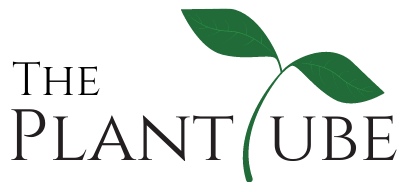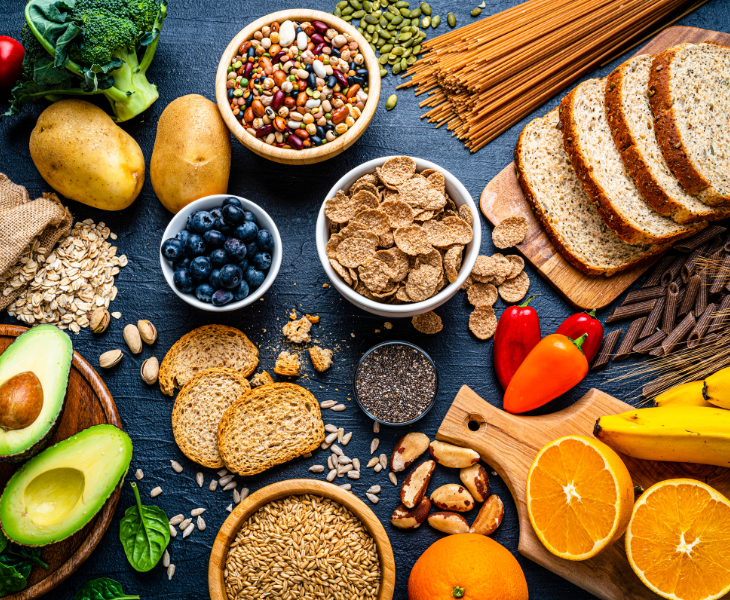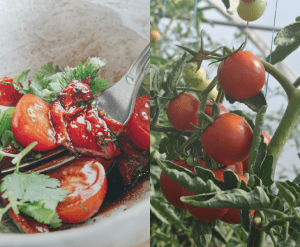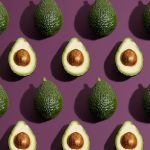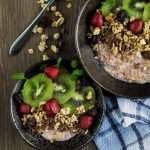What Are the Best Foods Rich in Dietary Fiber?
Are you looking to improve your digestion, maintain a healthy weight, and keep your heart in top shape? The answer could be as simple as adding more dietary fiber to your meals.
But what are the best sources of this essential nutrient, and how can you incorporate them into your diet?
In this blog post, we’ll identify the top foods rich in dietary fiber and explore its importance and benefits, and offer practical tips on how to include them in your daily meals.
What Is Dietary Fiber, and Why Is It Important?
Dietary fiber is a type of carbohydrate found in plant-based foods. Unlike other carbs, fiber isn’t digested by your body. Instead, it passes through the digestive system relatively intact, helping to regulate the body’s use of sugars and keeping hunger and blood sugar in check.
There are two types of dietary fiber: soluble and insoluble. Soluble fiber dissolves in water, forming a gel-like substance that helps lower blood cholesterol and glucose levels. Insoluble fiber, on the other hand, doesn’t dissolve in water and helps move material through your digestive system, promoting regularity and preventing constipation.
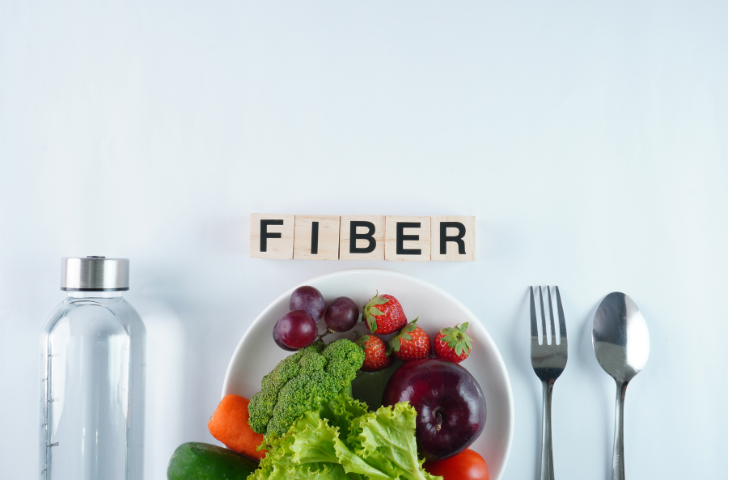
The Benefits of High Fiber Diet
Incorporating more dietary fiber into your diet comes with a host of health benefits:
- Improved Digestion: Fiber adds bulk to the stool and helps food move through the digestive system more efficiently, reducing the risk of constipation and promoting regular bowel movements.
- Heart Health: Soluble fiber helps lower cholesterol levels by binding to cholesterol particles and removing them from the body, reducing the risk of heart disease.
- Weight Management: High-fiber foods are more filling, which can help you eat less and stay satisfied longer, aiding in weight loss or maintenance.
- Blood Sugar Control: Fiber, particularly soluble fiber, can slow the absorption of sugar, helping to maintain steady blood sugar levels and reducing the risk of type 2 diabetes.
Top 10 Foods Rich in Dietary Fiber
Now that you understand the importance of dietary fiber, let’s dive into some of the best sources of this nutrient. Here are ten fiber-rich foods you should consider adding to your diet:
1. Legumes
Beans, Lentils, and Peas
Legumes are some of the best sources of dietary fiber. Just one cup of cooked beans, such as black beans, kidney beans, or lentils, can provide 15-16 grams of fiber, which is about half of the daily recommended intake for adults. They are also rich in protein, making them an excellent meat substitute for vegetarians and vegans.
How to Include Them in Your Diet:
- Add beans to salads, soups, or stews.
- Make a hearty lentil curry or chili.
- Use mashed beans as a base for dips or spreads.
2. Whole Grains
Oats, Barley, and Brown Rice
Whole grains are another excellent source of dietary fiber. Oats, in particular, are rich in soluble fiber, specifically beta-glucan, which has been shown to lower cholesterol levels. A cup of cooked oats contains about 4 grams of fiber, while barley and brown rice offer about 6 and 3.5 grams per cup, respectively.
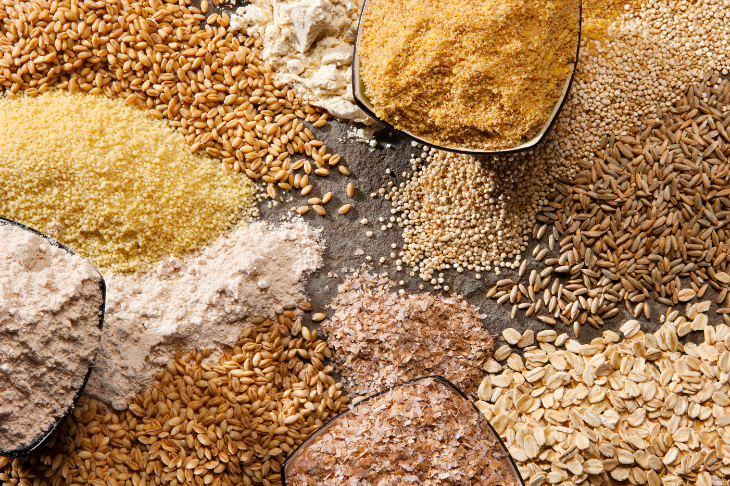
How to Include Them in Your Diet:
- Start your day with a bowl of oatmeal topped with fruits and nuts.
- Swap refined grains for whole grains like brown rice, quinoa, or barley in your meals.
- Use whole-grain flours for baking bread, muffins, or pancakes.
3. Fruits
Berries, Apples, and Pears
Fruits are not only delicious but also packed with dietary fiber. Berries, such as raspberries, blackberries, and strawberries, are particularly high in fiber, with up to 8 grams per cup. Apples and pears are also great choices, especially when eaten with the skin, as they provide about 4-6 grams of fiber each.
How to Include Them in Your Diet:
- Enjoy a handful of berries as a snack or add them to yogurt, cereals, or smoothies.
- Keep the skin on when eating apples and pears to maximize fiber intake.
- Include fruit salads or fresh fruit as part of your meals.
4. Vegetables
Broccoli, Carrots, and Brussels Sprouts
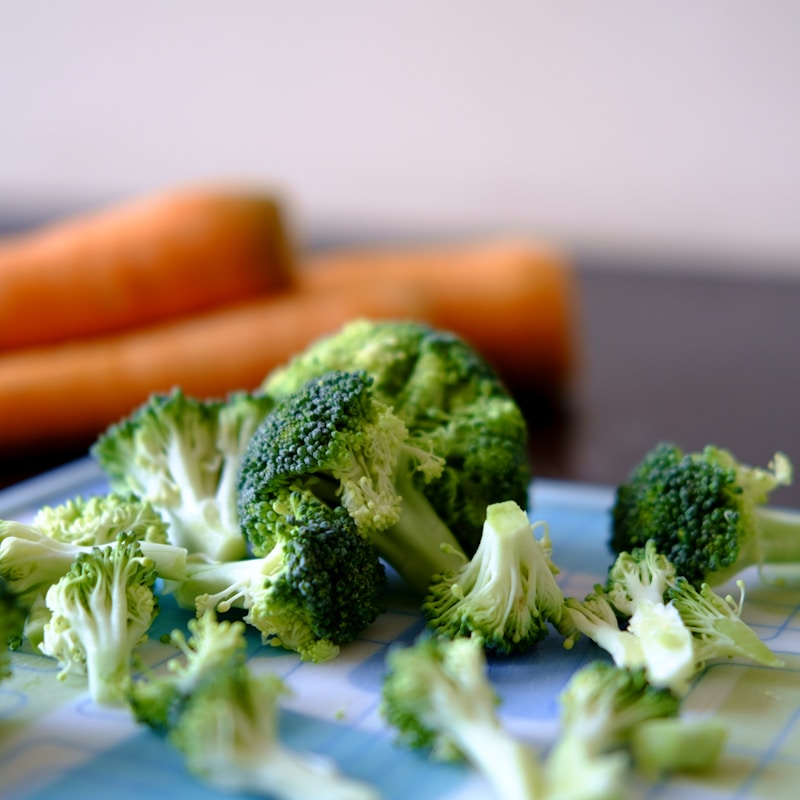
Vegetables are an essential part of a fiber-rich diet. Cruciferous vegetables like broccoli, Brussels sprouts, and cauliflower are particularly high in fiber. One cup of cooked broccoli provides about 5 grams of fiber, while carrots and Brussels sprouts offer around 4 grams per cup.
How to Include Them in Your Diet:
- Add steamed or roasted vegetables as a side dish to your meals.
- Incorporate vegetables into soups, stir-fries, or casseroles.
- Snack on raw veggies like carrots and celery with hummus.
5. Nuts and Seeds
Chia Seeds, Flaxseeds, and Almonds
Nuts and seeds are not only rich in healthy fats but also provide a good amount of dietary fiber. Chia seeds and flaxseeds are particularly notable, offering about 10 and 8 grams of fiber per ounce, respectively. Almonds are another great option, with around 3.5 grams of fiber per ounce.
How to Include Them in Your Diet:
- Sprinkle chia seeds or flaxseeds on yogurt, smoothies, or salads.
- Use ground flaxseeds as an egg substitute in baking.
- Snack on a handful of almonds or add them to your favorite recipes.
6. Whole-Wheat Products
Whole-Wheat Bread, Pasta, and Cereals
Switching from refined grains to whole-wheat products is an easy way to increase your fiber intake. Whole-wheat bread and pasta contain about 2-4 grams of fiber per serving, while whole-grain cereals can provide up to 10 grams per serving.
How to Include Them in Your Diet:
- Choose whole-wheat bread for sandwiches and toast.
- Opt for whole-wheat pasta instead of refined varieties.
- Start your day with a bowl of whole-grain cereal.
7. Root Vegetables
Sweet Potatoes, Beets, and Parsnips
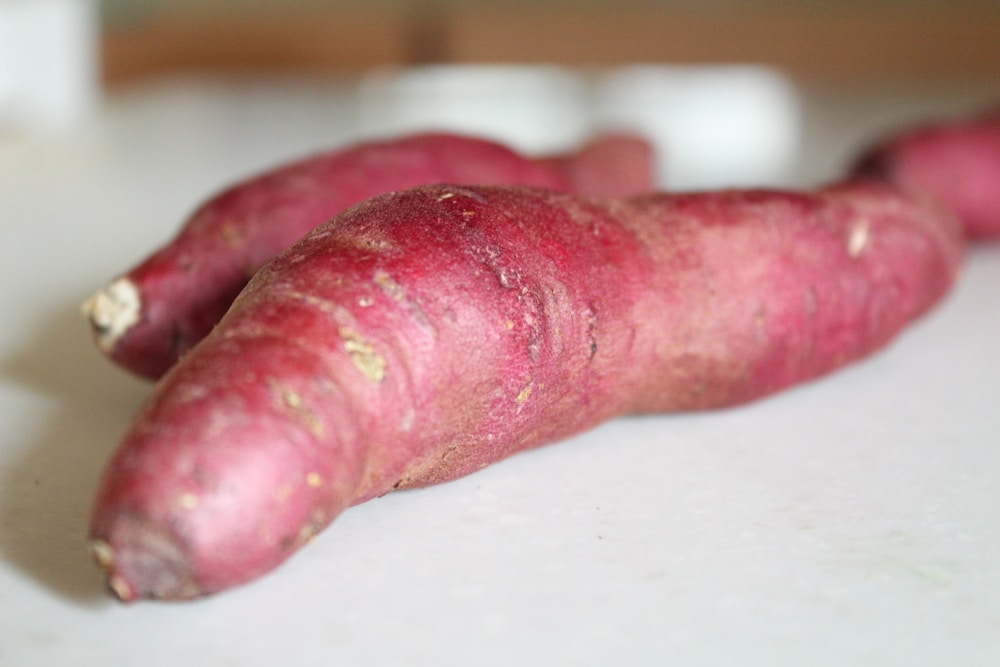
Root vegetables are another fiber-rich food group. Sweet potatoes, beets, and parsnips are not only flavorful but also packed with nutrients, including dietary fiber. A medium-sized sweet potato contains about 4 grams of fiber, while beets and parsnips offer around 3-4 grams per serving.
How to Include Them in Your Diet:
- Roast root vegetables for a delicious side dish.
- Add grated beets or carrots to salads.
- Use mashed sweet potatoes as a base for healthy casseroles.
8. Popcorn
Yes, you read that right—popcorn is a whole grain and a surprisingly good source of fiber. Air-popped popcorn contains about 1 gram of fiber per cup, making it a healthy snack option when you’re craving something crunchy.
How to Include It in Your Diet:
- Enjoy air-popped popcorn as a low-calorie, high-fiber snack.
- Skip the butter and salt for a healthier version; instead, try seasoning with herbs or spices.
9. Avocados
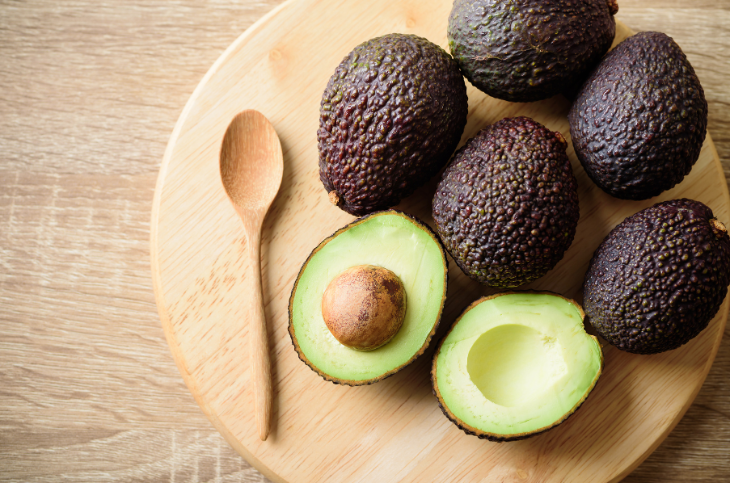
Avocados are well-known for their healthy fats, but they’re also a great source of fiber. One medium avocado contains about 10 grams of fiber, making it a superfood that can help you meet your daily fiber needs.
How to Include Them in Your Diet:
- Spread mashed avocado on toast or sandwiches.
- Add diced avocado to salads, salsas, or smoothies.
- Use avocado as a base for creamy dressings or dips.
10. Psyllium Husk
Psyllium husk is a type of fiber derived from the seeds of the Plantago ovata plant. It’s often used as a fiber supplement because it’s incredibly rich in soluble fiber—about 6 grams per tablespoon.
How to Include It in Your Diet:
- Mix psyllium husk powder into water, juice, or smoothies.
- Add it to baked goods to boost fiber content.
- Use it as a natural thickener in soups or sauces.
How Much Fiber Do You Need?
The recommended daily intake of fiber is 25 grams for women and 38 grams for men. However, most people fall short of these guidelines. By incorporating more of the foods listed above into your diet, you can easily meet or exceed your daily fiber needs.
Simple Tips for Adding More Fiber to Your Diet
- Start Slowly: Increase your fiber intake gradually to avoid digestive discomfort. Your body needs time to adjust to the higher fiber levels.
- Drink Plenty of Water: Fiber works best when it absorbs water, so staying hydrated is essential.
- Choose Whole Foods: Opt for whole, unprocessed foods whenever possible. Processing often removes fiber from foods.
- Read Labels: Check food labels for fiber content. Aim for foods that provide at least 3 grams of fiber per serving.
Conclusion: Take the First Step Toward a Healthier Diet Today!
Incorporating more dietary fiber into your meals is a simple yet powerful way to improve your overall health. From legumes and whole grains to fruits, vegetables, nuts, and seeds, there are plenty of delicious, fiber-rich foods to choose from. Start by making small changes, like swapping refined grains for whole grains or adding an extra serving of vegetables to your plate.
Ready to take your diet to the next level? Start today by adding one new fiber-rich food to your meals and feel the difference it makes.
Don’t forget to share your journey with us in the comments below—your experience might inspire others to make healthier choices too!
